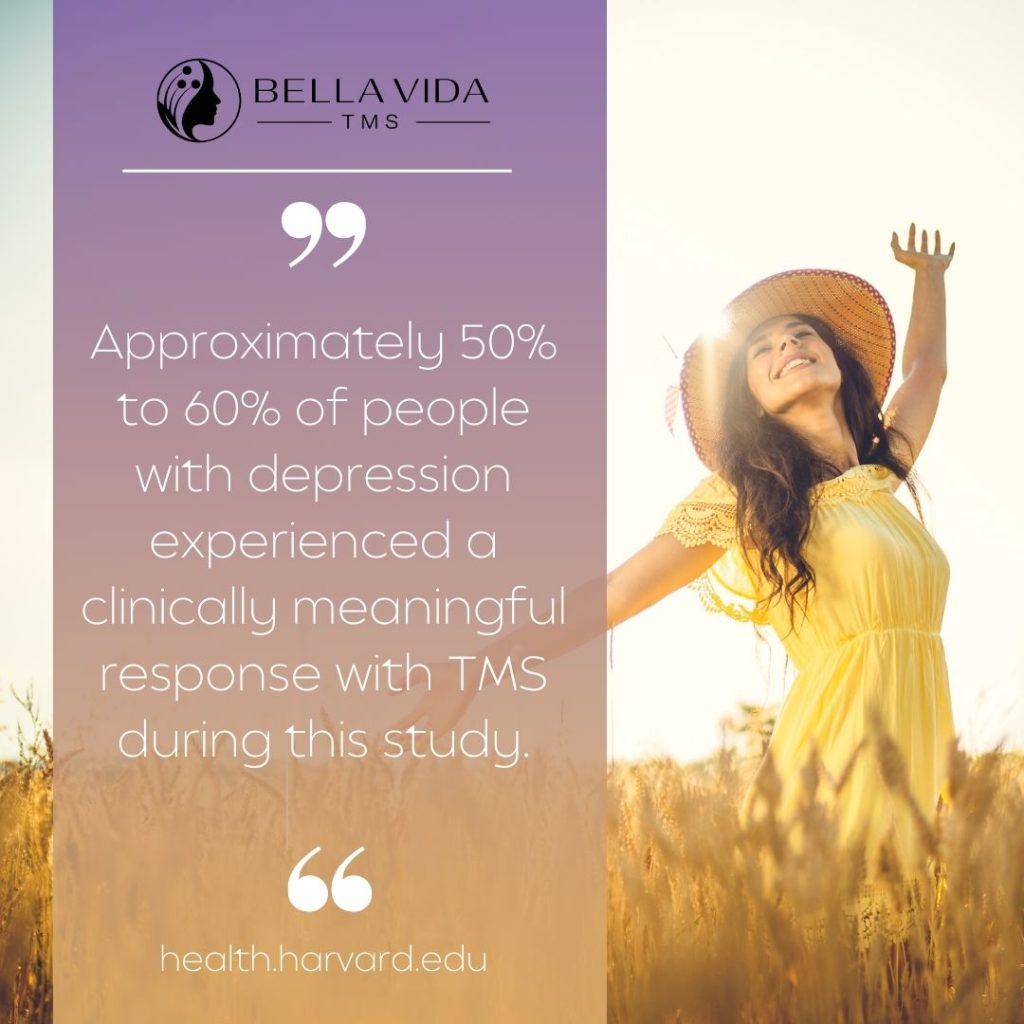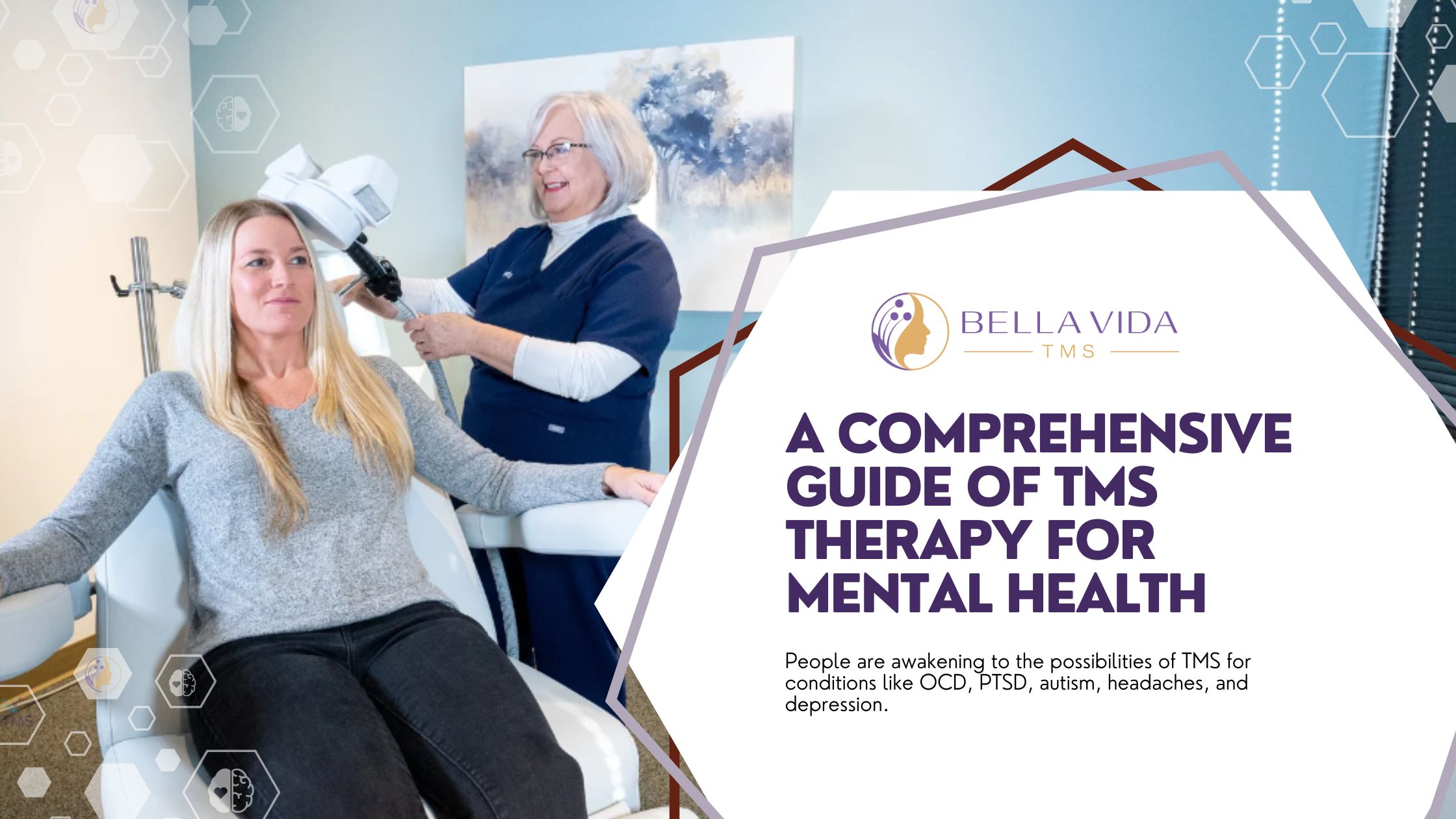In recent times, the search for TMS clinics and TMS therapists near me has seen a significant upswing. People are awakening to the possibilities of TMS for conditions like OCD, PTSD, autism, headaches, and depression. Yet, amid the growing exposure to both personal stories and scientific data about TMS, the public remains largely unaware of this promising treatment path. This article seeks to illuminate the path ahead and provide essential insights into TMS.
Discovering TMS: A Path to Enhanced Mental Health
TMS, short for transcranial magnetic stimulation, stands as a noninvasive procedure that harnesses magnetic fields to stimulate nerve cells within the brain. The U.S. Food and Drug Administration (FDA) has bestowed approval upon TMS for treating depression in cases where other treatments have proven ineffective. Additionally, the FDA has extended approval to TMS for OCD (obsessive-compulsive disorder) treatments. A more intensive form, known as repetitive transcranial magnetic stimulation (rTMS), has gained FDA recognition as a short-term treatment for smoking cessation.
The TMS Procedure: Navigating the Journey
TMS for conditions like OCD and depression involves the delivery of magnetic pulsations to specific brain regions. It’s important to note that there are no incisions or insertions involved; it is entirely noninvasive and external. During a TMS session, an electromagnetic coil is placed on the scalp’s exterior. When activated, this coil emits magnetic pulses that stimulate nerve cells in mood-associated brain regions. This process essentially “awakens” brain areas with reduced activity linked to depressive symptoms.
Exploring Beyond FDA Approval: Off-Label TMS Applications
While FDA approval for TMS currently pertains to OCD, depression, and smoking cessation, TMS clinics are not limited to these boundaries. This practice of using TMS for conditions outside FDA endorsement is known as off-label use. One noteworthy example is the use of TMS for autism spectrum disorder (ASD), where a tailored form of TMS called MeRT treatment is employed. MeRT treatments are personalized applications of TMS that adhere to the noninvasive, pain-free, and drug-free principles of standard TMS. This personalized approach allows for effective ASD treatment. It’s crucial to mention that any licensed provider discovered when searching for a “TMS therapist near me” will use FDA-cleared devices for these treatments.

A closely related brain stimulation method called transcranial direct current stimulation (tDCS) is also being utilized off-label to address depression, anxiety, and cognitive challenges associated with conditions like multiple sclerosis, stroke, Parkinson’s disease, and other movement disorders. In tDCS therapy, noninvasive brain stimulation is delivered via a low-grade electrical current. Electrodes attached to the scalp via headsets can either reduce or increase brain activity in specific stimulated regions. One significant advantage of this form of TMS is that it allows patients to remain mobile during treatment, enabling them to engage in exercises or activities under the guidance of a physical therapist while their brain areas receive stimulation.
Integration of TMS with Other Therapies: A New Horizon in Mental Health Care
TMS offers numerous benefits that make it an appealing choice for individuals grappling with various mood-related and cognitive challenges. While it is often recommended after conventional treatments have faltered, seeking relief doesn’t necessitate prolonged suffering. Here are some key advantages of TMS:
- Insurance typically covers TMS when used for FDA-approved purposes.
- Studies have shown high success rates for TMS in treating OCD, depression, and aiding in smoking cessation.
- TMS sessions are quick and comfortable.
- There’s no post-treatment recovery time, allowing patients to resume their daily activities immediately.
- TMS offers a medication-free approach to treating depression.
- Most individuals do not experience significant side effects following TMS sessions, and any discomfort can usually be mitigated by adjusting the stimulation levels.
- TMS provides long-lasting results, with some research indicating sustained effects for up to a year or longer.
It’s essential to differentiate TMS from electroconvulsive therapy (ECT). TMS is a painless procedure that doesn’t require anesthesia; patients can simply relax in a chair or recliner during the session. While some individuals may experience mild to moderate side effects such as scalp discomfort, headaches, tingling in facial muscles, or lightheadedness, care providers can adjust the stimulation levels to minimize these symptoms.
The Significance of Personalization
Just as medical treatment is tailored to individual patients, so should TMS therapy. Conventional TMS often adopts a one-size-fits-all approach, seeking to align patients with the average brainwave frequency of around 10 hertz. In contrast, PrTMS® therapy is designed to synchronize brainwaves with each patient’s unique optimal frequency.
PrTMS®: Bridging the Gap with EEG
In the realm of mental health, neurocognitive tests are the gold standard for evaluating patient responses to treatment. However, PrTMS® takes a step further by incorporating electroencephalogram (EEG) brainwave activity data for an objective assessment of brain function. Alongside neurocognitive data, irregularities in cortical activity detected through EEGs inform treatment decisions. This personalized approach is the key to unlocking the full potential of TMS therapy.
External Reference links
- U.S. Food and Drug Administration – FDA permits marketing of transcranial magnetic stimulation for treatment of obsessive compulsive disorder
- Peak Logic – What is PrTMS®
- National Library of Medicine (NIH) – Is There Evidence for Effectiveness of Transcranial Magnetic Stimulation in the Treatment of Psychiatric Disorders?




